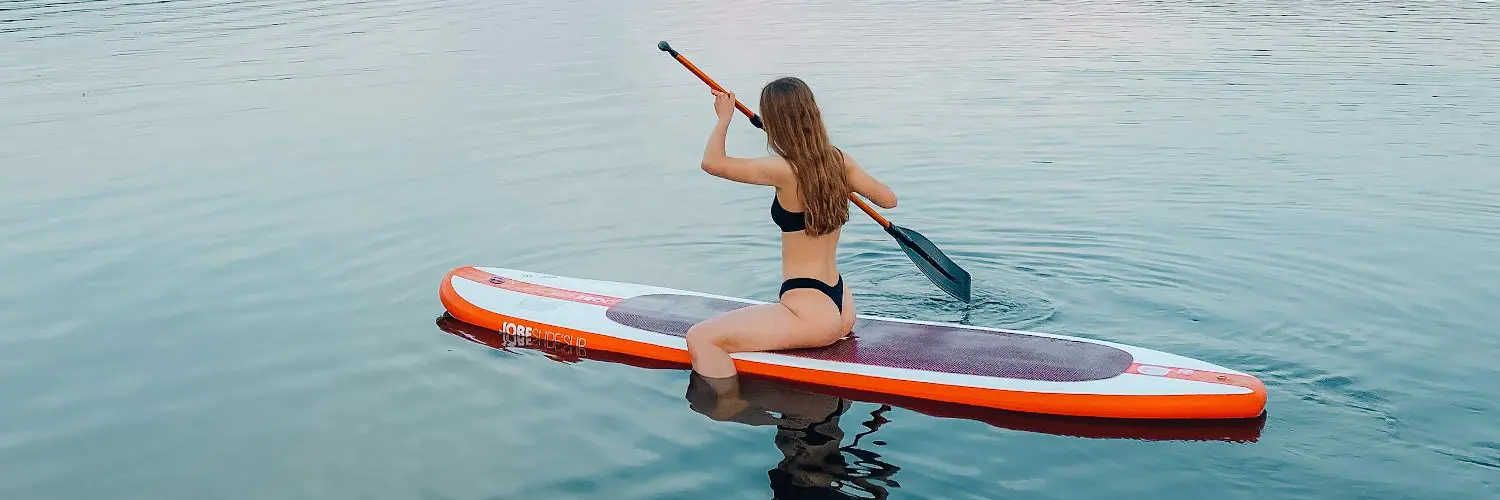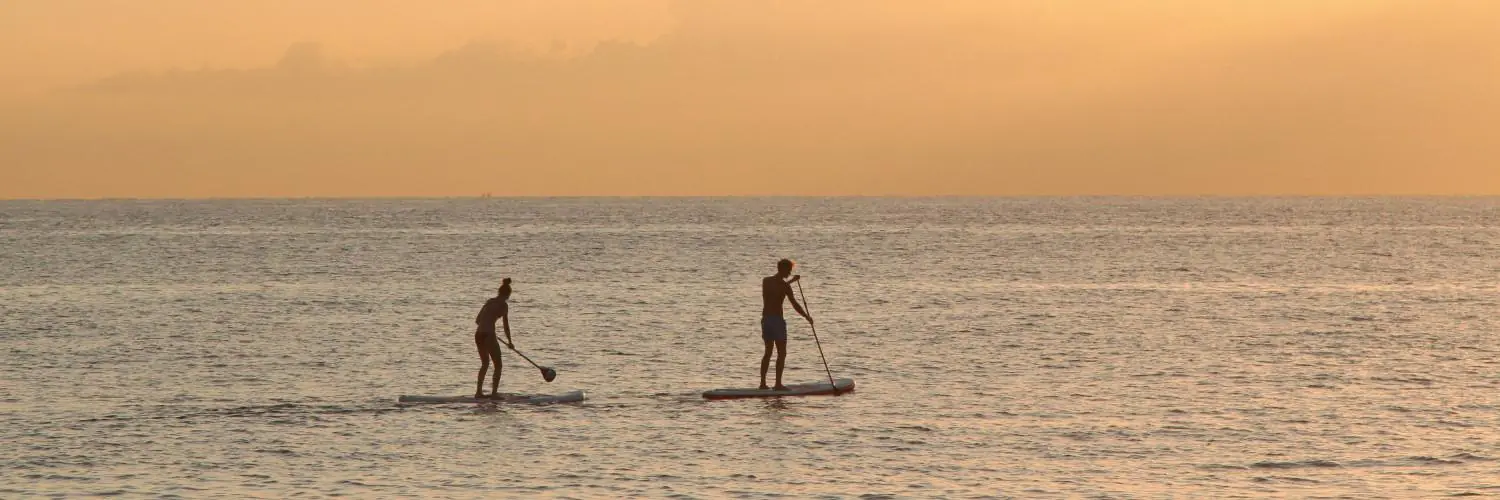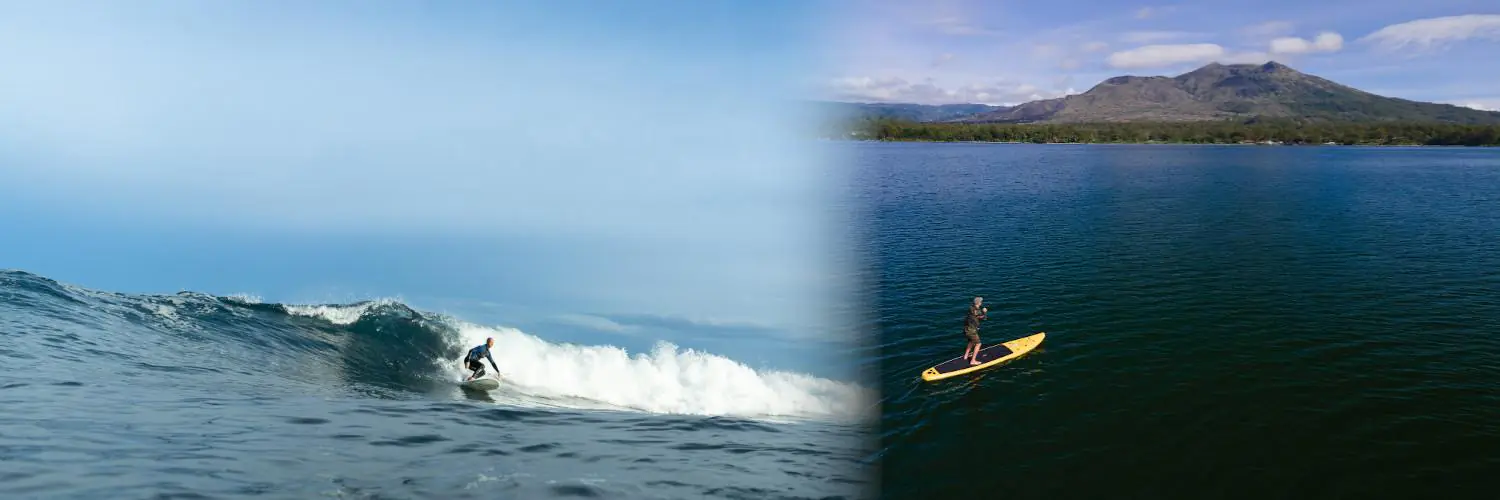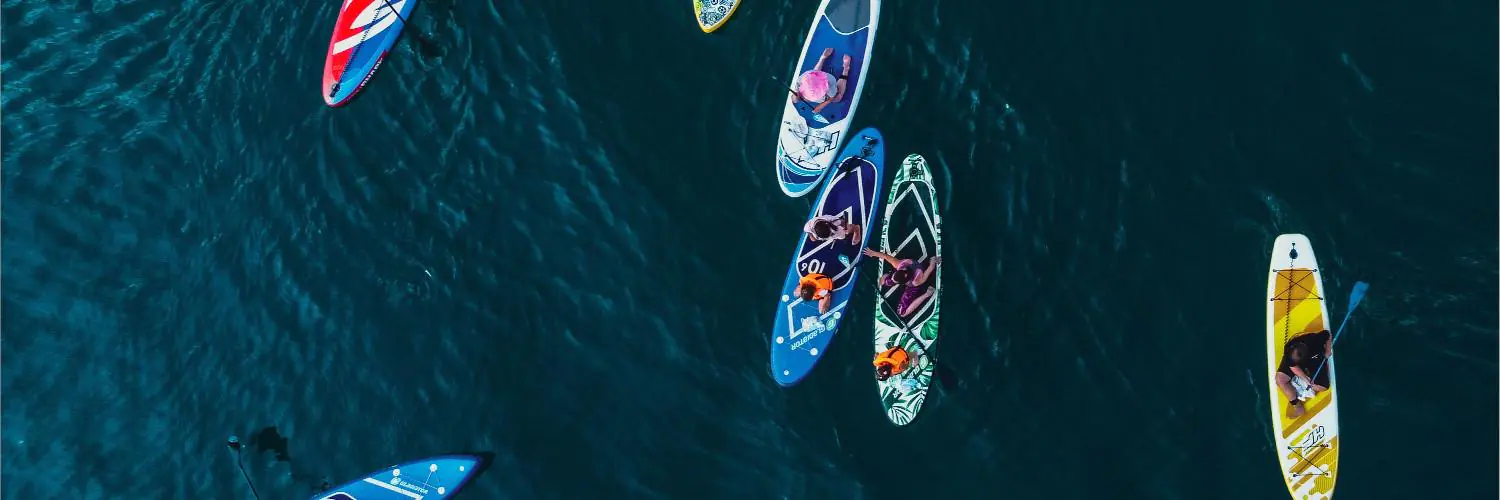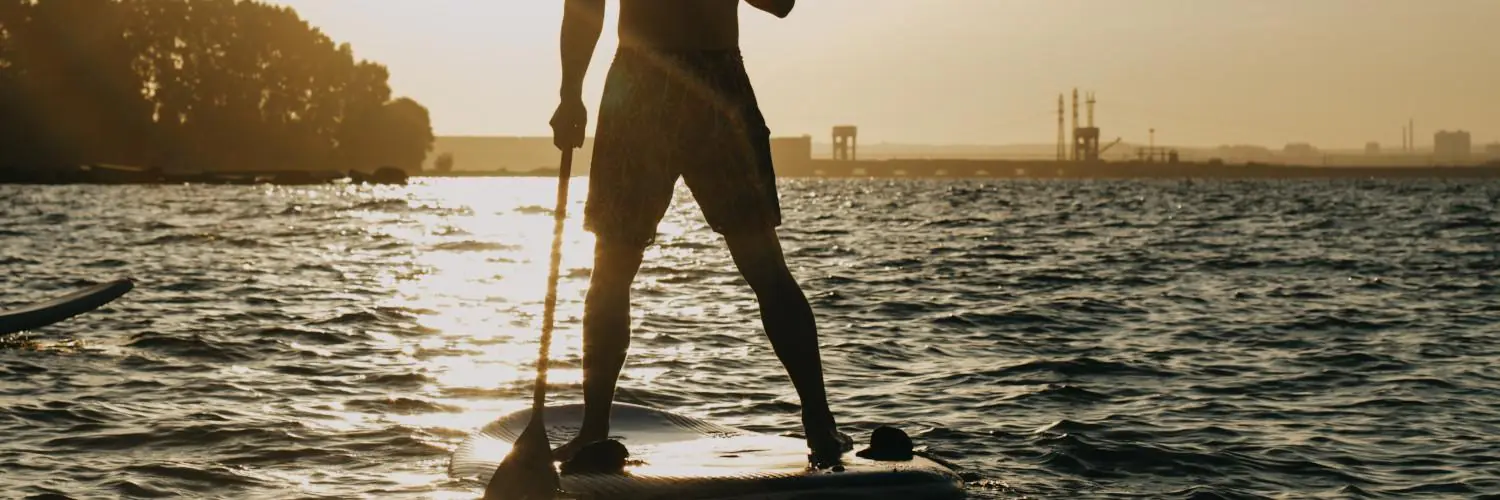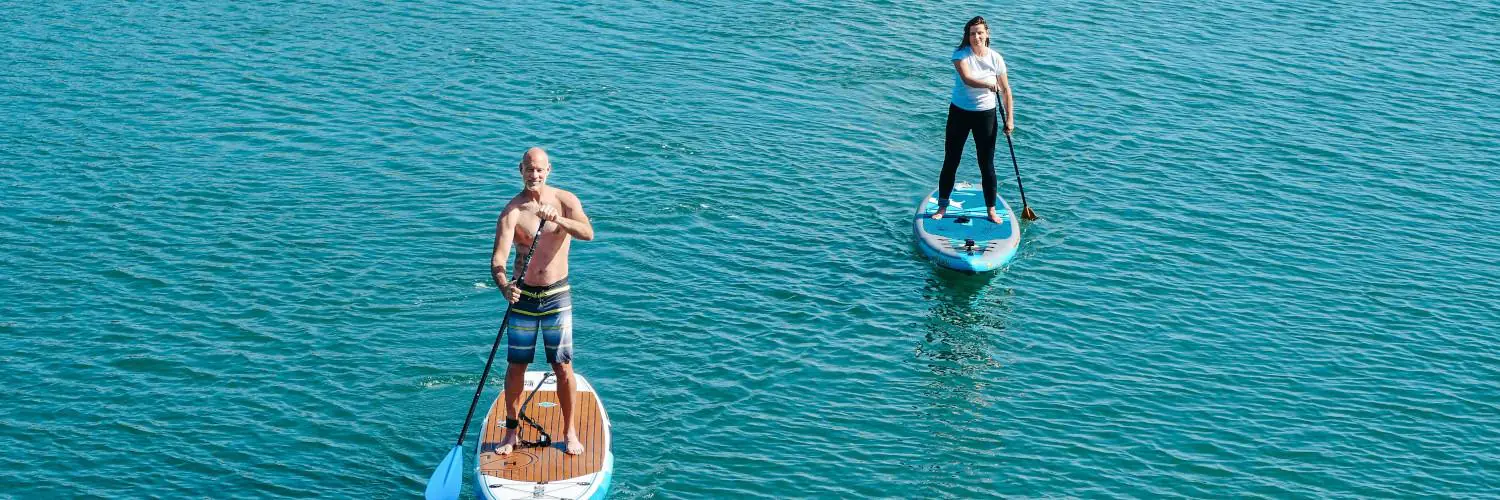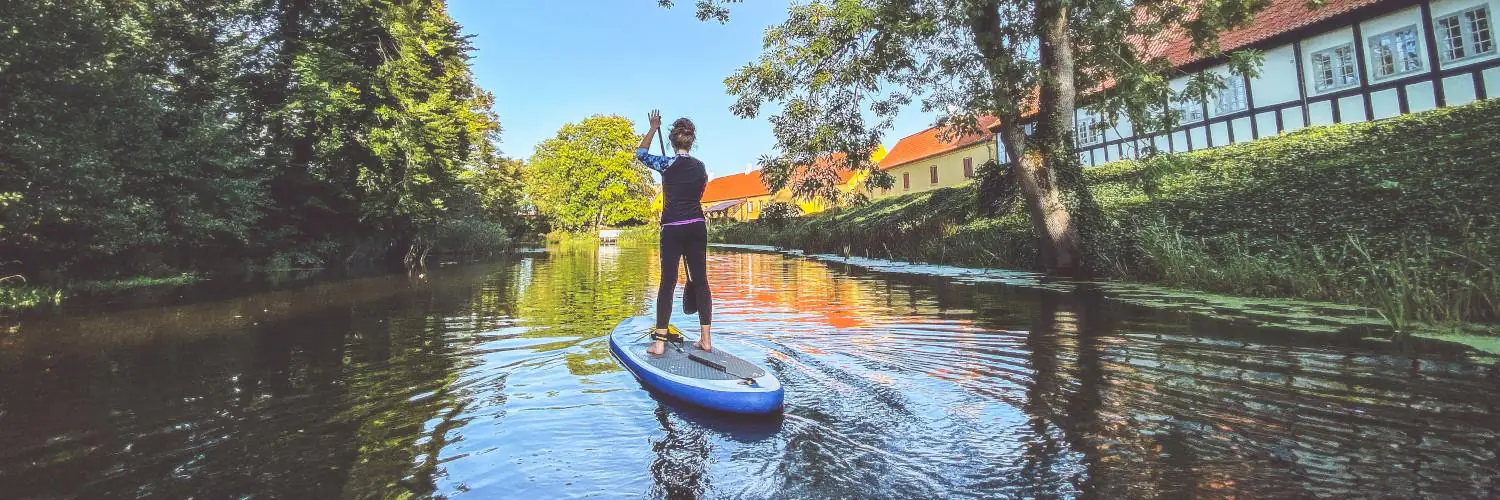Stand up paddle boarding (SUP) offers a fun way to play on the water, with the added benefit of a full-body workout. And, it gives you a unique vantage point for viewing what’s under the water and out on the horizon.
Table of Contents
What needs to be kept in mind while going SUP boarding?
Before you head out on the water for the first time, it’s helpful to know how to paddleboard and what gear to bring. To get started paddle boarding, you’ll want to learn:
- How to get geared up to SUP: you’ll need your paddle board, gear, life jacket and few other essentials.
- Basic SUP paddling techniques: just a few skills will ensure you don’t end up paddling in circles.
- A few helpful tips for your SUP outing which will help you as a beginner.
Tips for the first go at Stand up Paddle boarding
Before you grab your board and head to the water for the first time, here are some simple tips for planning your SUP outing:
- Choose a small, calm body of water, like a lake or pond, that’s free of obstacles like boats and buoys.
- Look for a sandy beach or another place you can wade into the water to easily launch your SUP.
- Choose a sunny day with little to no wind.
- If your route requires that you paddle into the wind, do so on your way out so you can get a boost from the wind on the way back when you’re getting tired.
- Go with a friend so you can keep an eye on each other.
- Plan to paddle for about one hour on your first outing.
Basic SUP Paddling Techniques
With only a little instruction, most beginners are able to stand up and start paddling shortly after taking a SUP out for the very first time. To get you started, here are some tips on:
- Standing up
- Balance
- Falling and getting back on
Standing on a Paddle board
Here are few steps that should be followed while trying to stand on the paddleboard. Stand alongside the board in about knee-deep water (just deep enough that the fins on the board don’t hit the bottom).
- Hold the board by the edges and work your way onto the board in a kneeling position, just behind the center point of the board (you can quickly locate the center of the board by finding the carry handle).
- Keep your hands on the sides of the board to stabilize it and move one foot at a time to place your feet where your knees were.
- Rather than standing up in one motion, start by raising your chest up while keeping your knees bent. Once your chest is vertical, extend your legs to stand up.
How to attain and maintain balance
Once you’re standing, there are a handful of things you can do to maintain your balance on the board:
- Position your feet so they are parallel, about hip-width distance apart, and centered between the edges of the board.
- Keep your toes pointed forward, knees slightly bent, and your back straight.
- Keep your head and shoulders steady and upright, and shift your weight by moving your hips.
- Your gaze should be level at the horizon. Avoid staring at your feet.
How to hold your paddle
It is very important to know how you hold the handle which will mpve you in the water.
It’s fairly common to see beginner paddlers holding their SUP paddles the wrong way. To avoid making the same mistake, here are two things to know when grabbing your paddle:
- The blade should angle forward from the shaft, toward the nose of the board.
- When you’re paddling on the right side of your board, your left hand will be on the T-grip and your right hand a few feet down on the shaft. When you switch sides, reverse your hand and vice versa
How to get back on the board if you fall
Despite your best efforts to stay balanced on your board, you’re going to fall in the water at some point. Even experienced paddlers take the plunge from time to time, so if you’re feeling a little wobbly, don’t worry about it and remember that SUP is a watersport, so it’s okay to get wet.
Things to do when you lose your balance
- Aim yourself to the side, so that you fall into the water and not onto the board. Falling onto the board is more likely to cause an injury.
- Try to hang onto your paddle while falling. If you get separated from it, retrieve your board first and get back on, then paddle with your hands to get the paddle.
To get back on your SUP after falling off
- Position yourself next to your board and near the center.
- Grab the handle at the center of the board with one hand and let your legs float up to the surface behind you, then kick them while pulling on the handle to slide yourself onto the board.
Now go get out there and have a good time!

